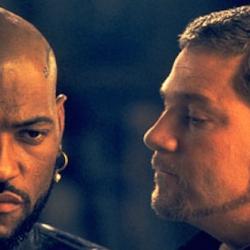According to Charlotte Gordon’s NYTBR review, Michael Knox Beran’s Murder by Candlelight “asks us to consider our own hearts of darkness, why we’re obsessed with murder stories, why this obsession matters, and what it suggests about us as a culture and a species.”
Beran reaches back into the nineteenth century to find really profound investigations of evil: “To understand why murderers murder, we need to consult the great 19th-century authors, using the likes of Thomas De Quincey, Thomas Carlyle and Sir Walter Scott as our guides. These Romantic prose artists wrote about killings that occurred during what Beran terms the golden age of murder, the period between 1811 and 1837. ‘It is less the quality of the crimes,’ Beran writes, with characteristic perspicacity, ‘than the attitude of the age which determines the gruesomeness of its murders.’ On a mission ‘to understand the nature of evil and to reinstate it in all its dark majesty’ as a fact of human nature, the Romantics were fascinated by ‘the horror that moves the soul.’ De Quincey argued that only through ‘sympathy’ can we see, as Beran puts it, ‘how certain killers, craving an intoxication they could experience in no other way, murdered over and over again precisely in order to intensify an existence which would otherwise have seemed to them insipid.’”
These writers “are extraordinary because they aren’t afraid to enter the terrible inner world of the killer. They tap into our unconscious capacity for cruelty by employing the Romantic tools of empathy and imagery, ‘the language of the poets.’”
We don’t have adequate tools for the task: “murder has been ‘antiseptically reduced to a problem of social science.’” More deeply, we don’t have enough confidence in good to look at evil without flinching. As Gordon puts it, in an almost theological vein, “Without the hope of what he terms an ‘arch-goodness,’ it’s almost impossible to tolerate the idea of absolute evil, and this points to the ultimate shallowness of modern conceptions of murder. . . . By turning murder into a puzzle to be solved or a socioeconomic issue that can be fixed, we have trivialized and defanged our understanding of evil.”















